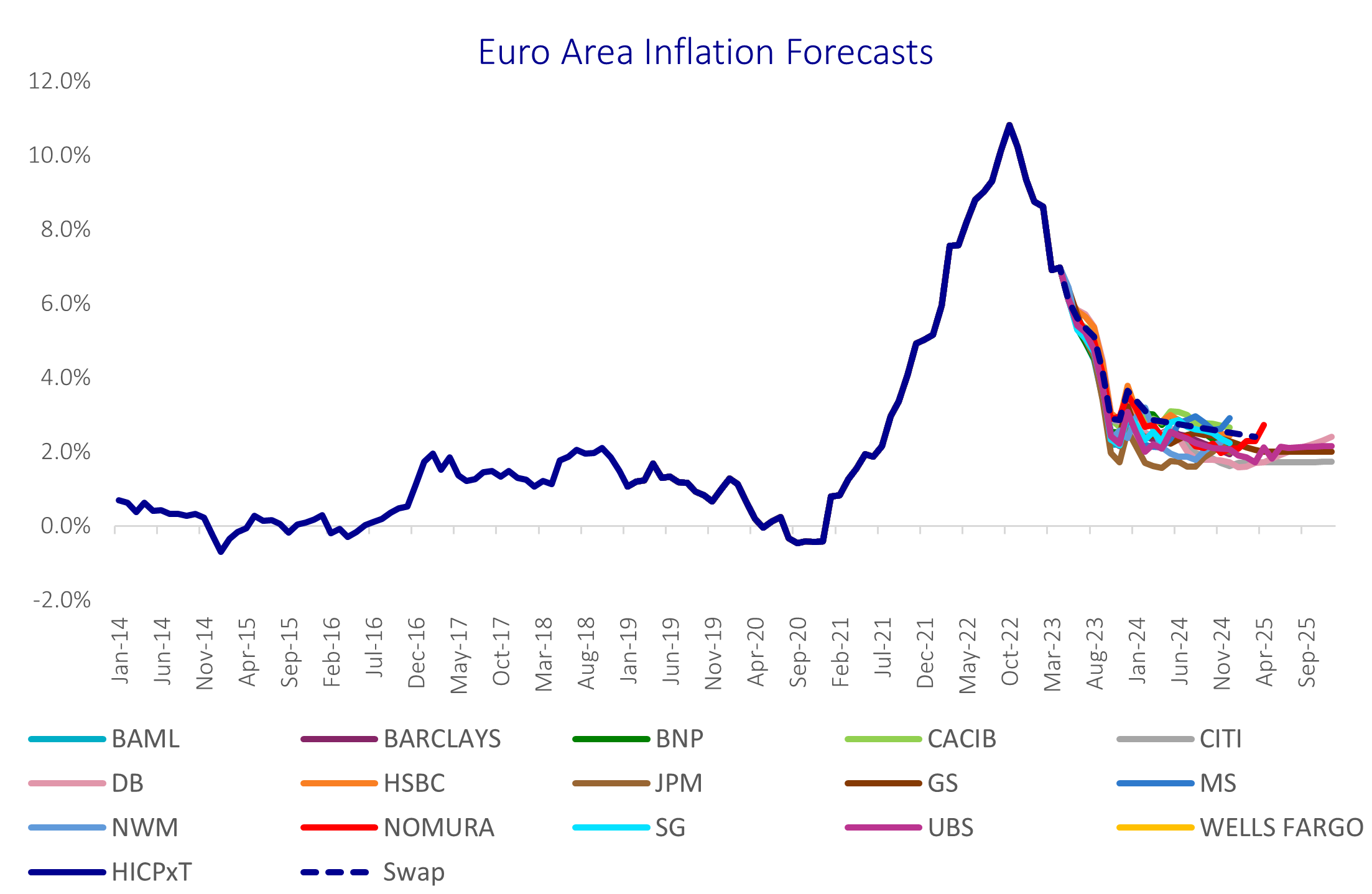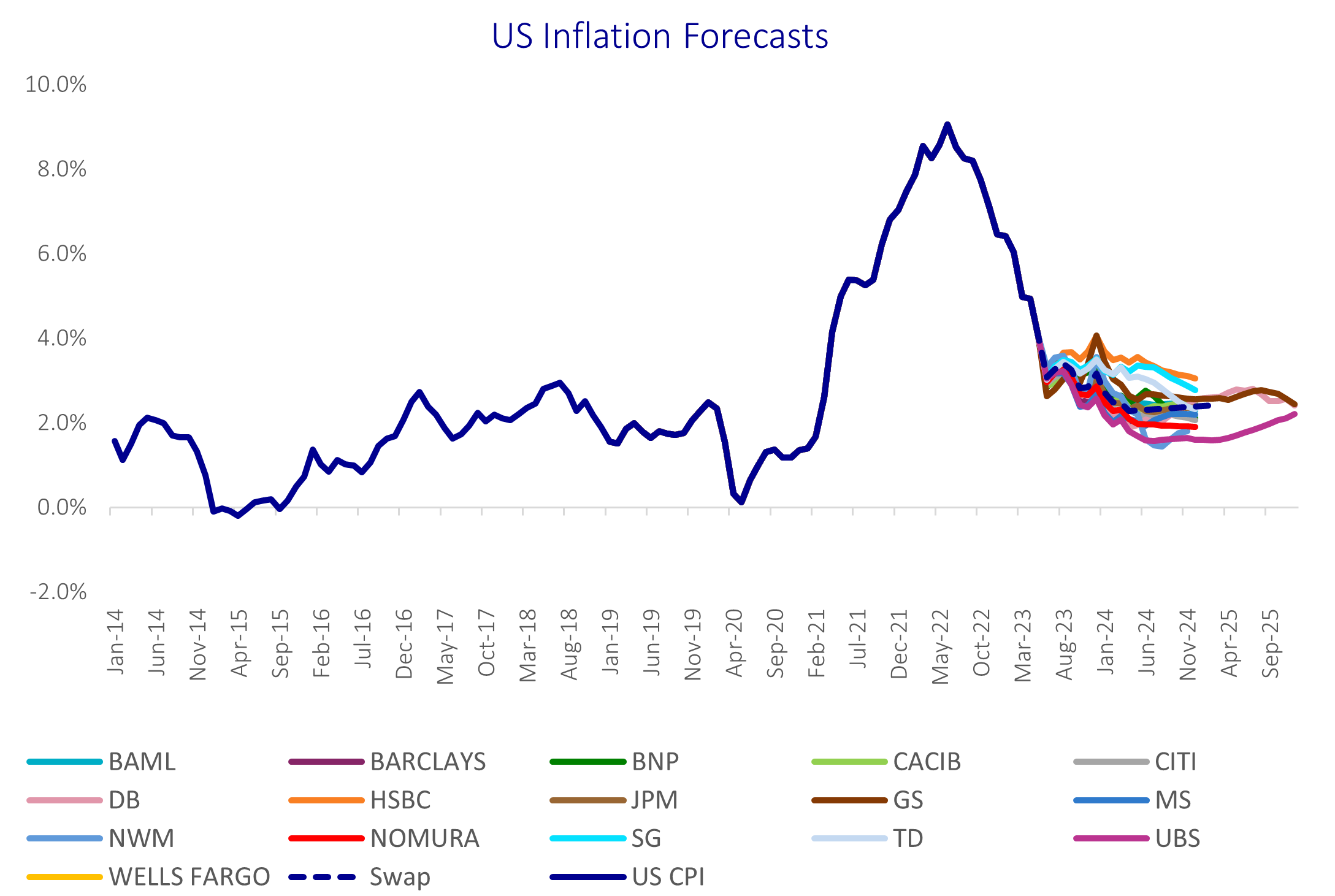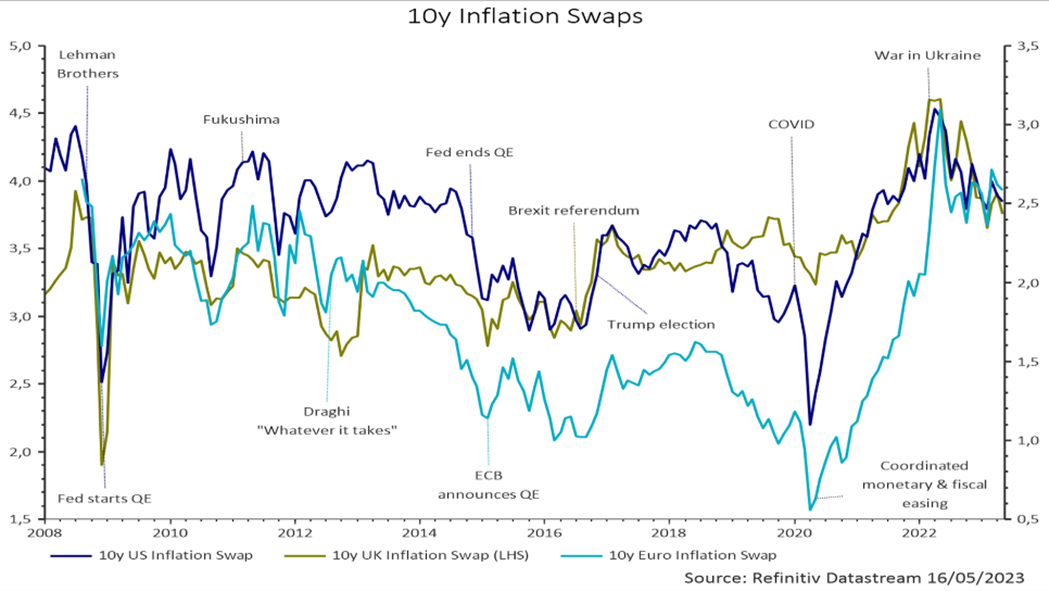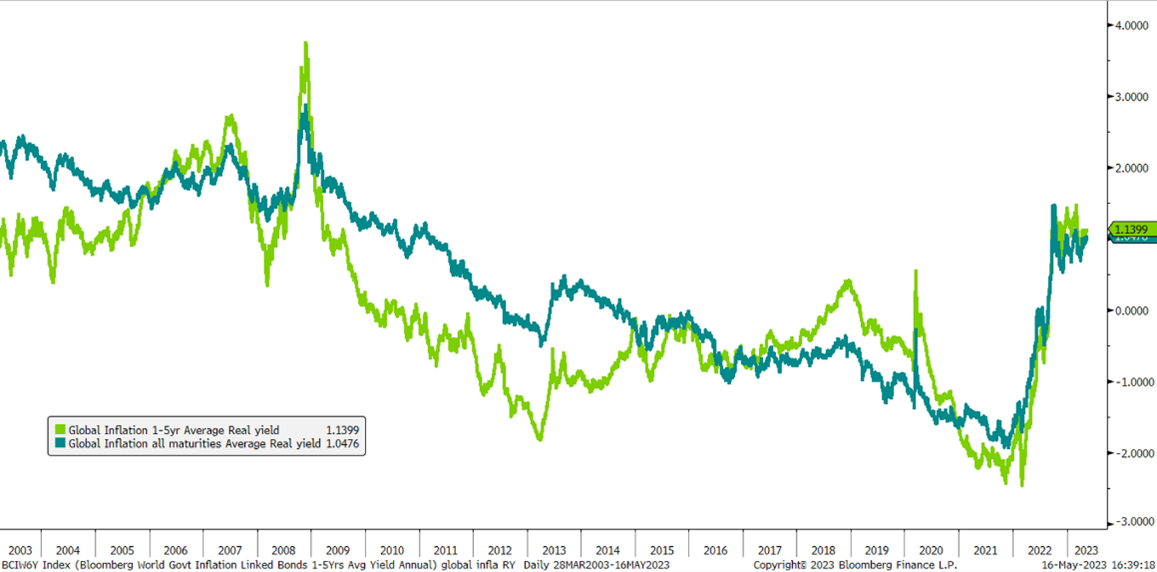
Why now may not be the time to sell inflation-linked bonds
- 17 May 2023 (5 min read)
Key points:
- The move away from inflation-linked bonds is expected but potentially misplaced.
- Why investors may want to re-evaluate their inflation-linked bond allocation
- What inflation-linked bonds offer in this market environment
Inflation-linked bonds tend to be at the sharp end of investor behaviour: investors pile in as inflation takes off and then disinvest when nearing the peak regardless of what the inflation level is. This current inflationary cycle has been no different and investors began moving away from inflation-linked bonds towards the end of 2022 as the headline inflation peak was anticipated. This trend continues today.
The challenge for investors, however, is that inflation is still high even by historic standards and, while headline inflation may have fallen from the extremes of this time last year, core inflation remains elevated. Inflation is sticky and we expect it may be a problem for the next decade. Factors that might see inflation remaining sticky such as the green revolution, the continuing supply strains on resources caused by the war in Ukraine and budget deficit concerns mean inflation levels could remain volatile for the foreseeable future.
Nevertheless, as the chart below shows, economists are still projecting a return to around the 2% target levels by the end of 2023..


Source: AXA IM Forecasting as of June 2023. The above represents our current market views only and does not constitute investment advice.
Added to this, the 10Y inflation breakevens suggest that the market is pricing future inflation at similar levels to those seen between 2010 and 2013.

Source: AXA IM, Datastream as at 16/05/2023
Market conditions offering opportunities
We expect that yield curves will remain inverted with overnight interest swap markets (OIS) pointing to US rates at 3.8% in 2-years’ time, Euro rates at 3.1% and sterling overnight rates at 4.4%1 . As an inverted yield curve has historically been followed by a yield rally, market signals are making a stronger case for duration than we’ve seen for a while. Considering this expectation of a duration rally once core inflation turns, adding duration as core inflation rolls over may be an interesting opportunity.
When inflation moderates, inflation breakevens tend to go down but this combination of elevated levels of real yields and moderate level of breakevens is where we see opportunities. Inflation-linked bonds’ average real yields are currently at their highest average level since 2009-2010 but they are positive suggesting that investors can lock-in an above inflation income.

We believe that the combination of this with the market complacency towards future inflation risks suggests that inflation-linked bond investors may be able to lock-in positive real yields at their highest level post Lehman while getting exposure to inflation breakevens, (effectively a form of insurance premium against future inflation) at historically attractive levels.
With inflation likely to be volatile for the foreseeable future, inflation-linked bonds may be a useful tool for investors: they provide resilience against sticky inflation and, as all inflation linked bonds cashflows are indexed to inflation and their issuers are often highly rated sovereigns, investing in inflation-linked bonds may be used as part of an investor’s capital preservation strategy.
- U291cmNlOiBCbG9vbWJlcmcsIE1heSAyMDIz
Disclaimer
The information on this website is intended for investors domiciled in Switzerland.
AXA Investment Managers Switzerland Ltd (AXA IM) is not liable for unauthorised use of the website.
This website is for advertising and informational purpose only. The published information and expression of opinions are provided for personal use only. The information, data, figures, opinions, statements, analyses, forecasts, simulations, concepts and other data provided by AXA IM in this document are based on our knowledge and experience at the time of preparation and are subject to change without notice.
AXA IM excludes any warranty (explicit or implicit) for the accuracy, completeness and up-to-dateness of the published information and expressions of opinion. In particular, AXA IM is not obliged to remove information that is no longer up to date or to expressly mark it a such. To the extent that the data contained in this document originates from third parties, AXA IM is not responsible for the accuracy, completeness, up-to-dateness and appropriateness of such data, even if only such data is used that is deemed to be reliable.
The information on the website of AXA IM does not constitute a decision aid for economic, legal, tax or other advisory questions, nor may investment or other decisions be made solely on the basis of this information. Before any investment decision is made, detailed advice should be obtained that is geared to the client's situation.
Past performance or returns are neither a guarantee nor an indicator of the future performance or investment returns. The value and return on an investment is not guaranteed. It can rise and fall and investors may even incur a total loss.
AXA Investment Managers Switzerland Ltd.